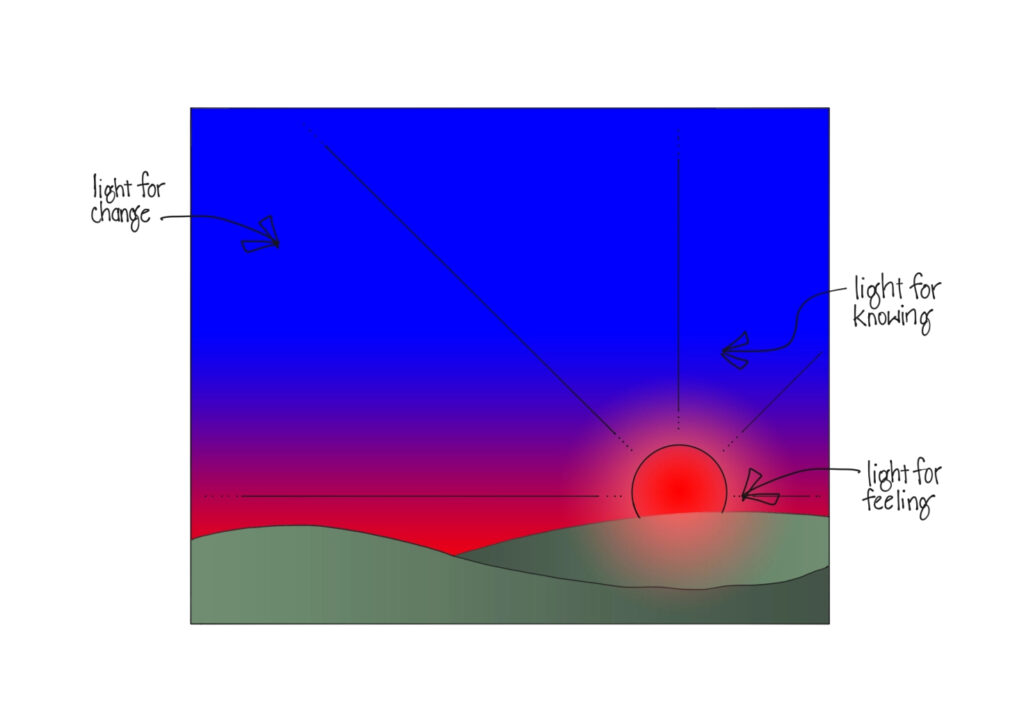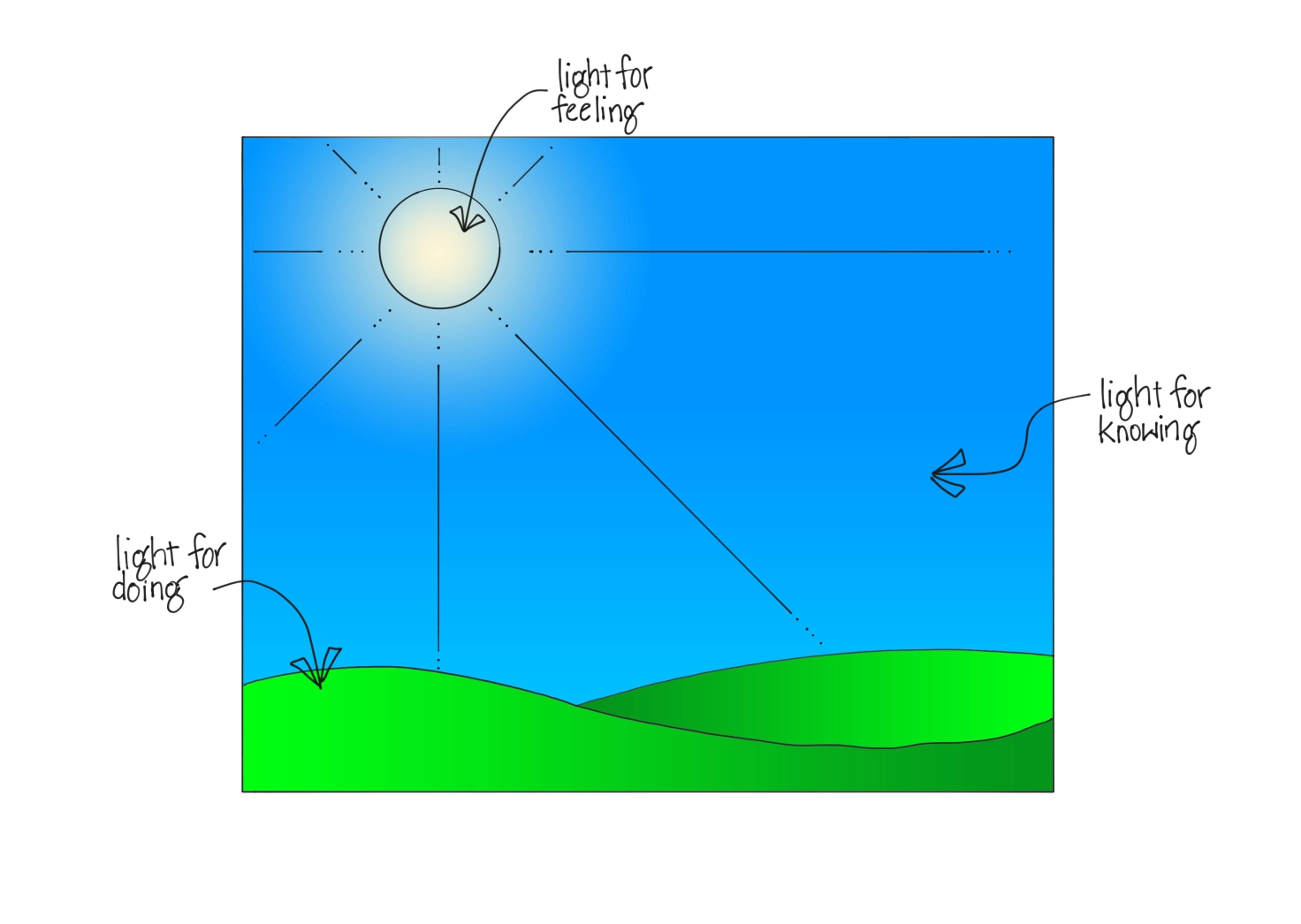In the introductory post, we discovered a new way to talk about light. Why am I so confident in this approach to lighting your home? Because it has been tested for thousands of years by billions of people, every time the sun comes out. I call it the Sunny Day Theory, and pair it with its companion the Starry Night Theory.
The two theories reflect several thousand years of the history of lighting design: the sun lit our days, stars and fires our nights. That’s it. For eons, we’ve grown accustomed to sunlight and stars and flame, and it pays to consider why these sources still appeal to us. If we can capture the essence of sunshine and flame without the downsides of both, we can make our homes significantly more inviting and relaxing.
The Sunny Day Theory
Most of us prefer sunny days to cloudy days. The local Mexican restaurant my wife loves is papered with Corona posters, each one dominated by a beautiful sunny beach. There is not a single cloudy-day Corona poster, and the reason is simple. We like the sun. And as it turns out, sunlight also plays a major role in our health and well-being, helping regulate our sleep and wake cycles, or circadian rhythm.
A few years ago it occurred to me that many spaces in homes and businesses and schools could benefit from a Sunny Day approach to lighting design, and the first of my illustrated theories was born. I am a big fan of large windows for natural light and views, but what happens when it is cloudy outside, your windows are small, or your wall opens to another apartment? What happens in December when the sun goes down before the work day ends? Bringing the components of a bright sunny day into your home can create a vibrant, energizing space.
There are three main elements to the typical beautiful sunny day: a bright white sun, a brilliant blue sky, and a dynamic day that begins with dawn and ends with dusk. Embedded in these simple elements are light for doing, light for knowing, light for feeling, and light that changes. And the story of a sunny day? Go outside and have fun!
Element One: A Bright White Sun
Recessed lighting (also called can lights or down lights) is the backbone of high-end residential lighting design. But recessed lighting is not like the sun; it’s more like a police helicopter searchlight. It can be used very effectively and as part of a beautiful lighting design, but it just isn’t the same as a Bright White Sun.
It turns out that seeing the sun- knowing where the big bright glare bomb in the sky is- is part of what makes a sunny day feel nice to us. At home, then, we need to be able to see where the light is coming from- this is one reason table lamps are so popular and comfortable. The shade softens the harsh glare coming from the light bulb, but we can still tell instantly where light is coming from in any given room. Having a stand-in for a Bright White Sun is critical to good lighting design, whether it be a floor lamp or illuminated niche. The sun provides light for seeing what we’re doing, certainly, but in being visible to us it also provides light for feeling good.
Element Two: A Brilliant Blue Sky
The Brilliant Blue Sky found on your typical sunny day provides more than a cobalt backdrop- it also provides a soft diffuse wash of light over everything- light for knowing where we are, where we are going, and who we’re with. This ambient, or “general” kind of light, is also important to lighting a home. It helps reduce shadows and allows us to see the entire room and anything in it- whether that be a book we’re reading, a piece of furniture we’d like our shins to avoid, or the person we’re supposed to be listening to across the table.

Element Three: Dynamic Day
My brother-in-law spent a year or two as a cabana boy in Florida before he settled down to become a banker. When he moved back to Illinois, everyone wanted to know why he would trade sunshine and sand for sleet and ice. His answer surprised me- he was tired of the monotony of sunshine and sand! I guess you can get too much of a good thing- and bright sunshine is no exception.
Fortunately, the universe has a built-in solution to this problem called the rotation of the earth. This fabulous spinning mechanism means most of us get a sunrise in the morning that gradually brightens our world, a few hours of very subtly changing daylight, and a soft end to the day at sunset. The Sunny Day is dynamic, always changing. We’ve grown accustomed to it, and even celebrate sunrise and sunset as the most beautiful parts of the day. As it turns out, we’re programmed for light that changes, and the dynamic day is the root of this reality.
The Sunny Day Theory is about finding artificial ways to replicate the feelings of a sunny day inside, without cutting too many holes in your roof. You can combine the elements Bright White Sun, a Brilliant Blue Sky, and a Dynamic Day using lamps and dimmers to great effect, and in future posts I’ll show you how this multi-layered approach can help you get the most out of your home.
